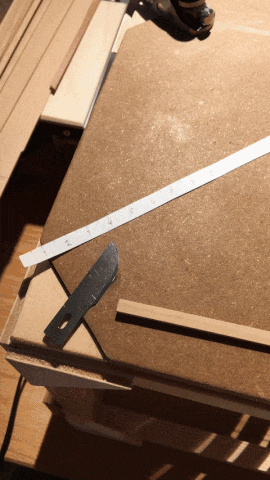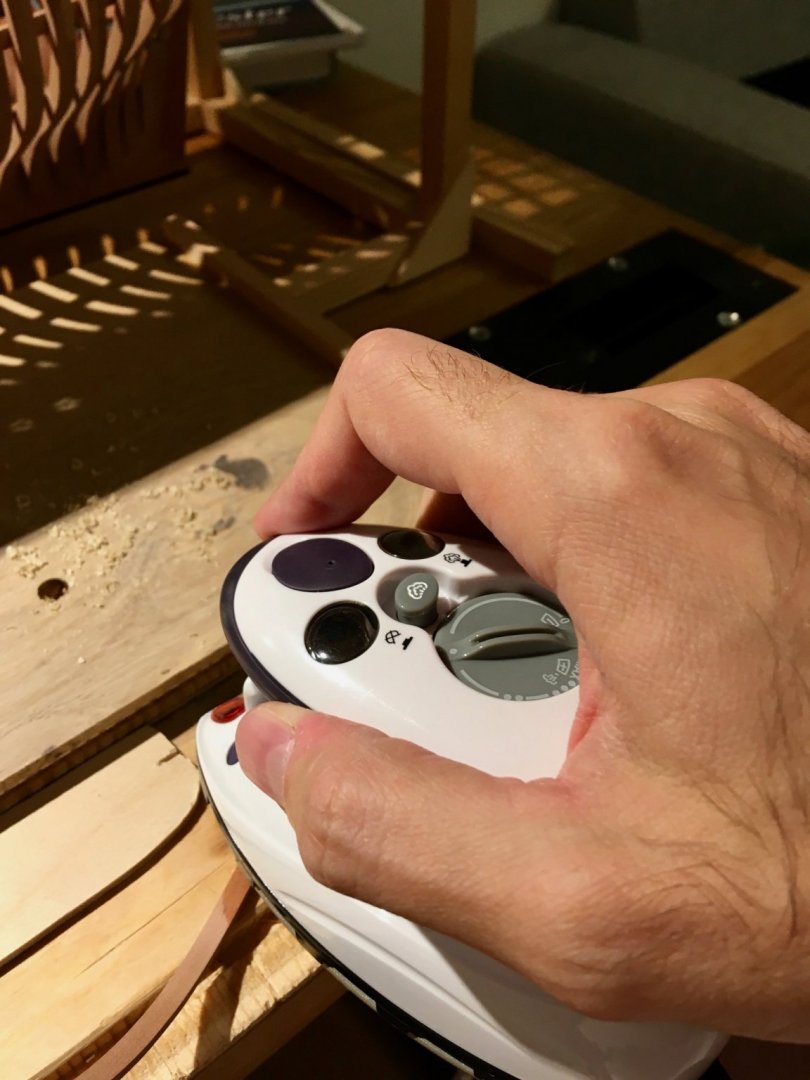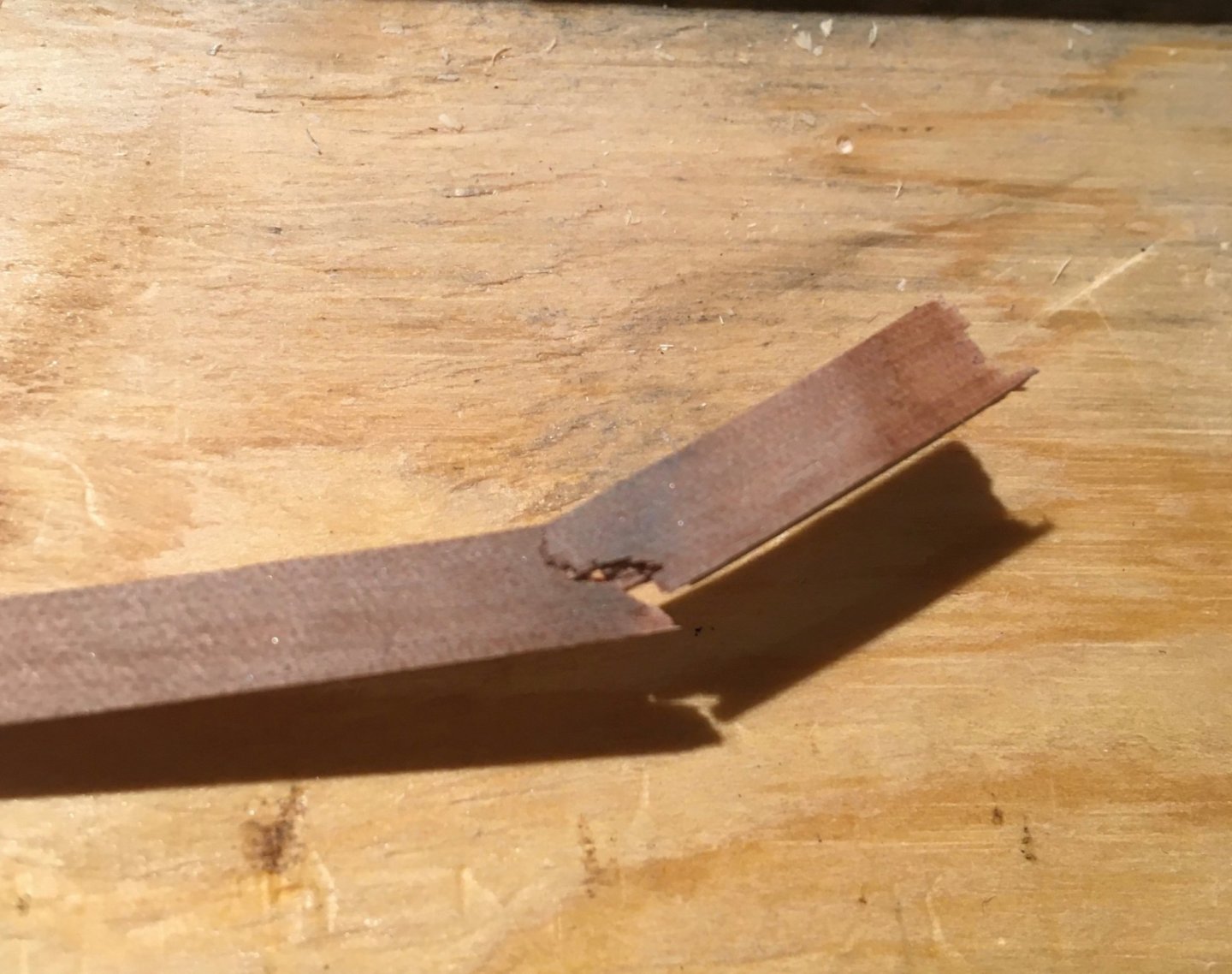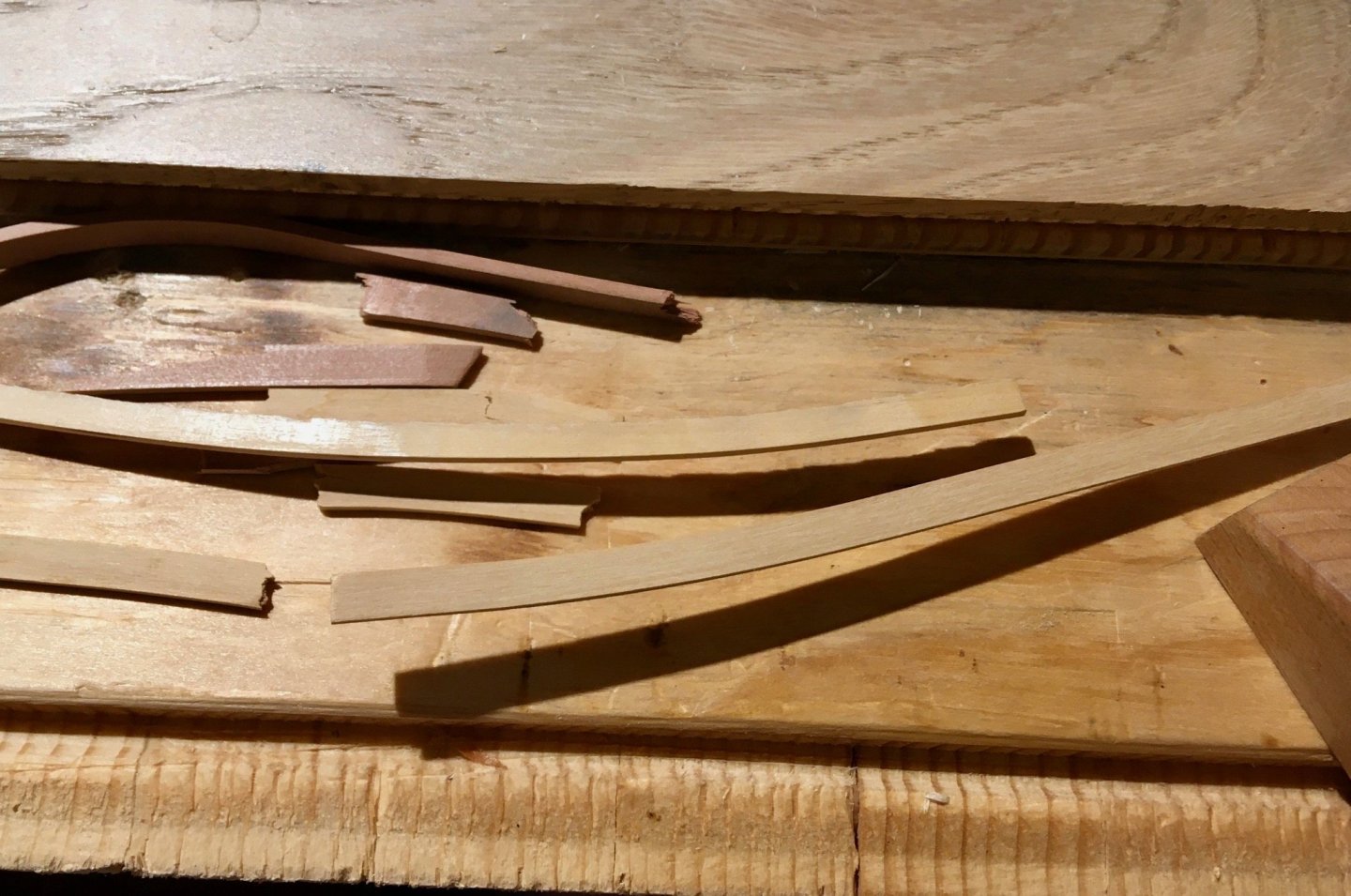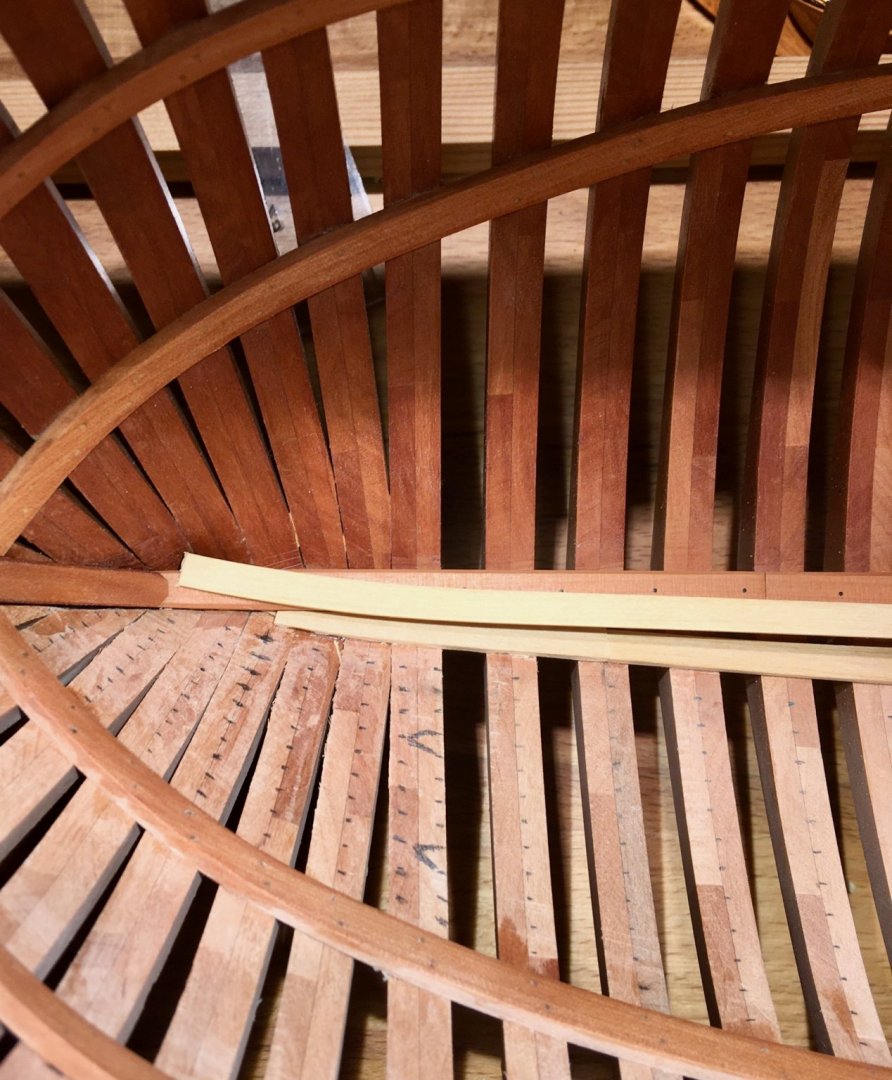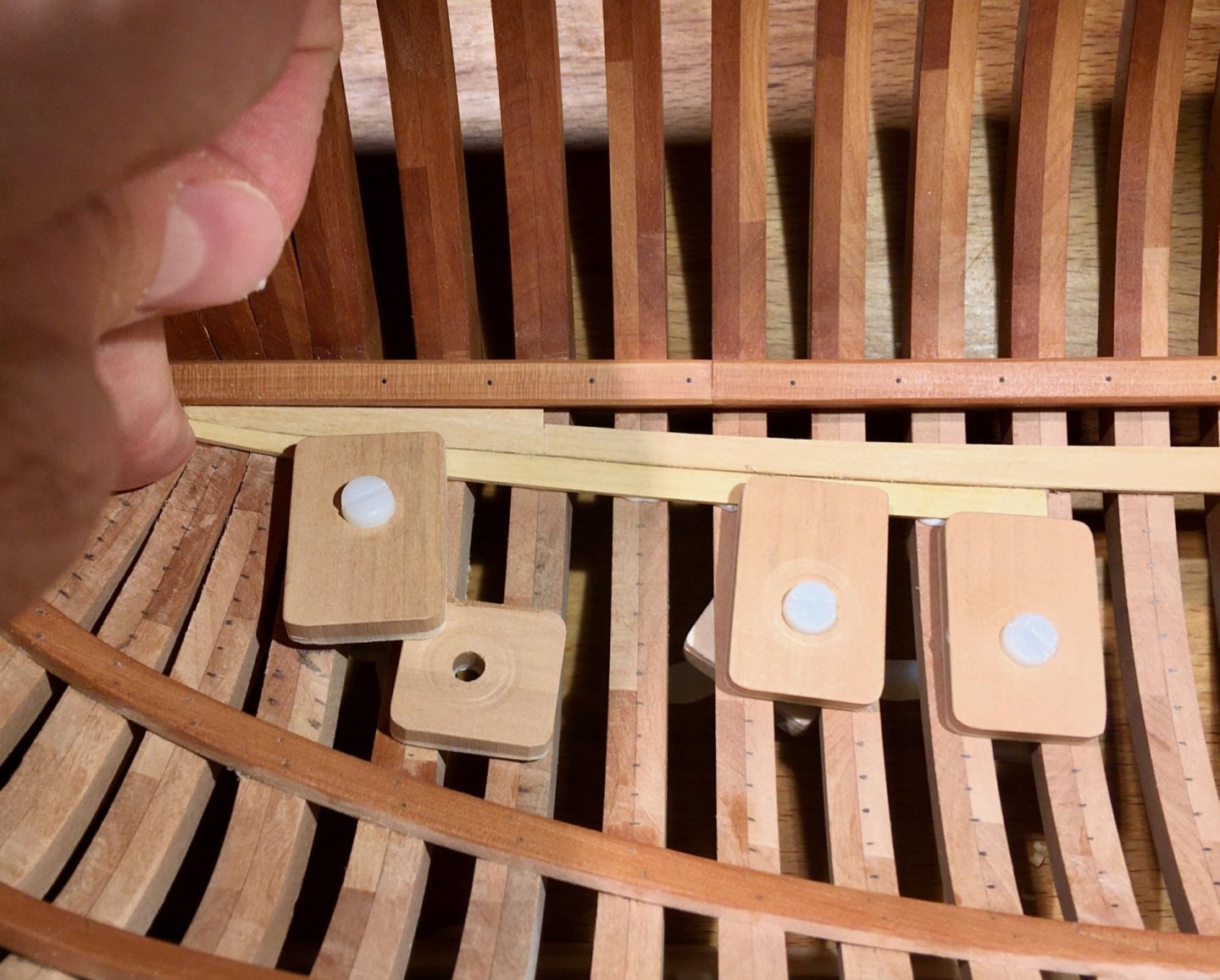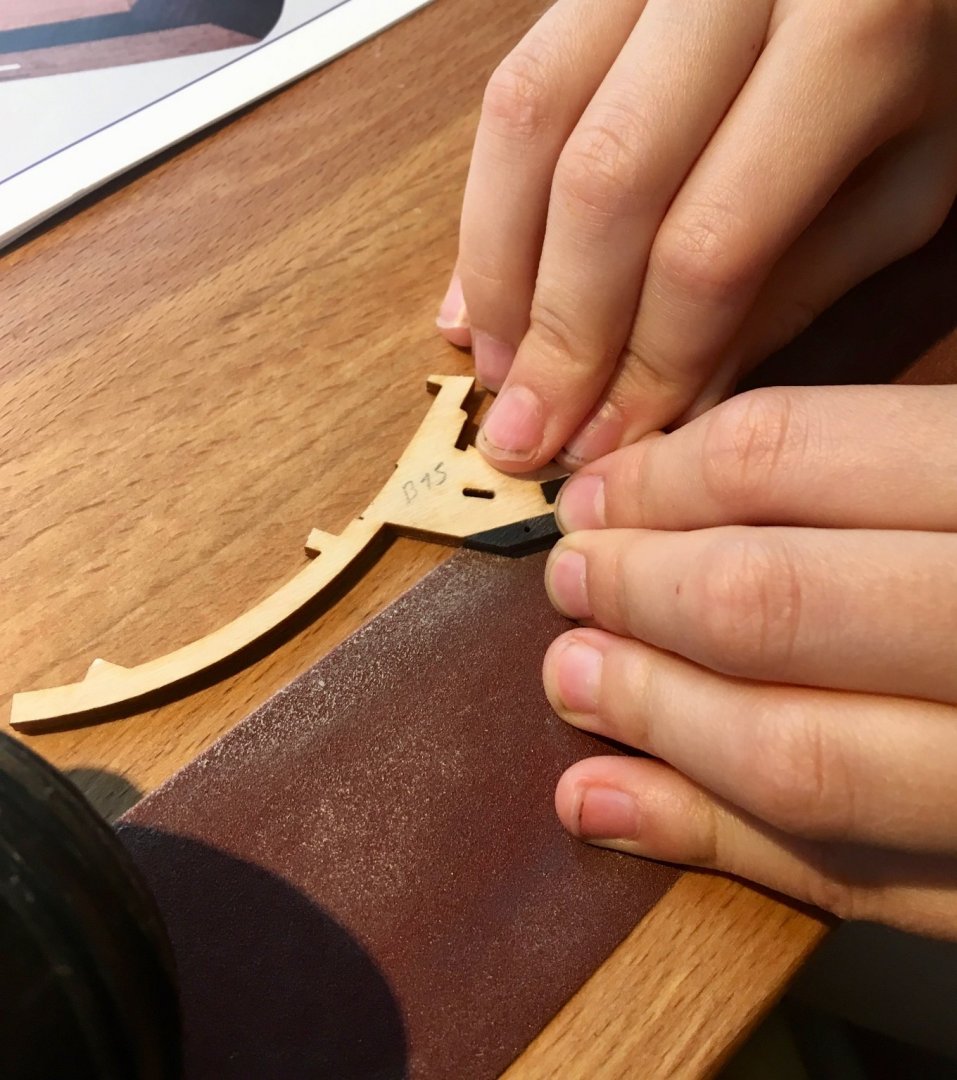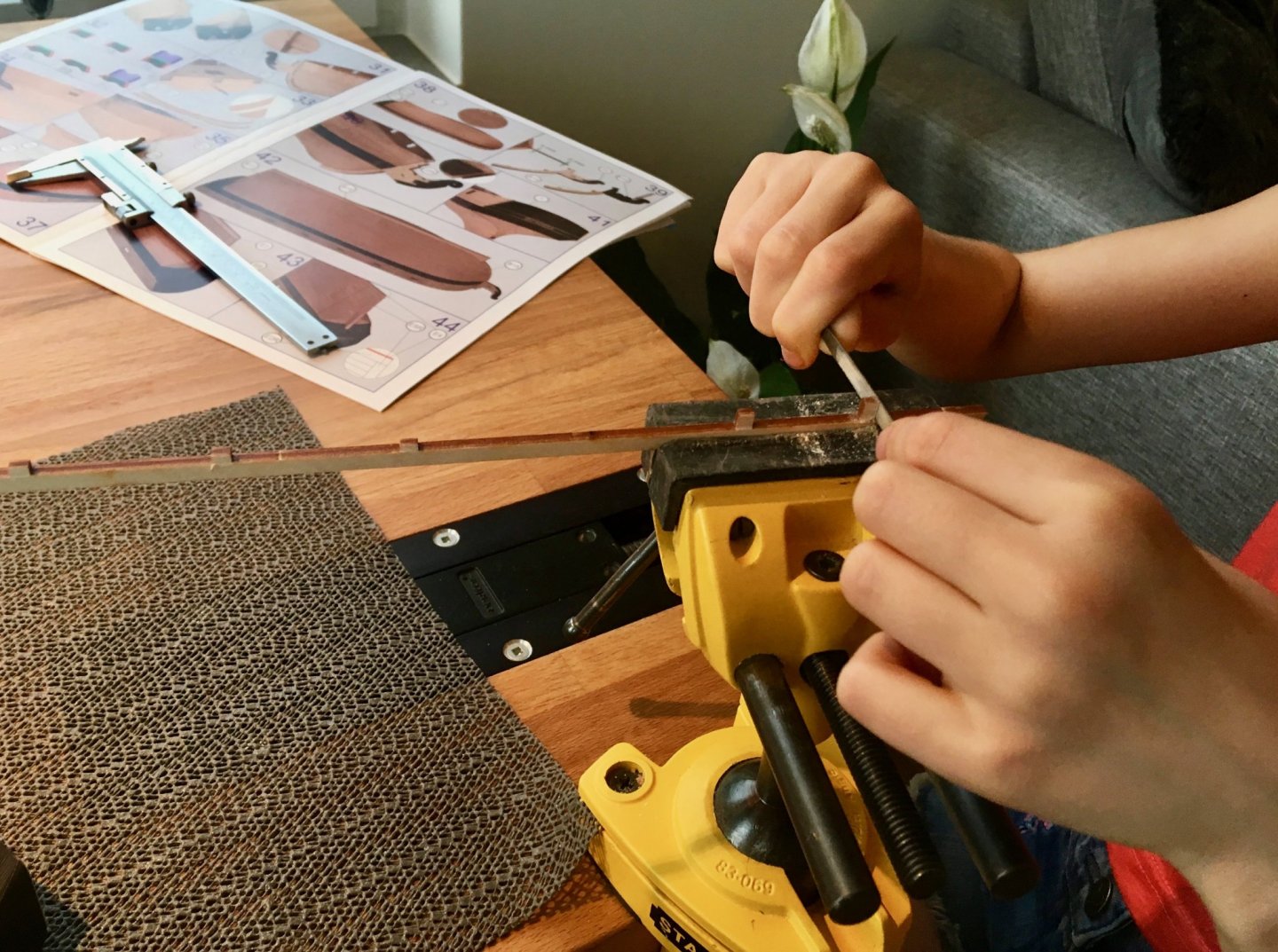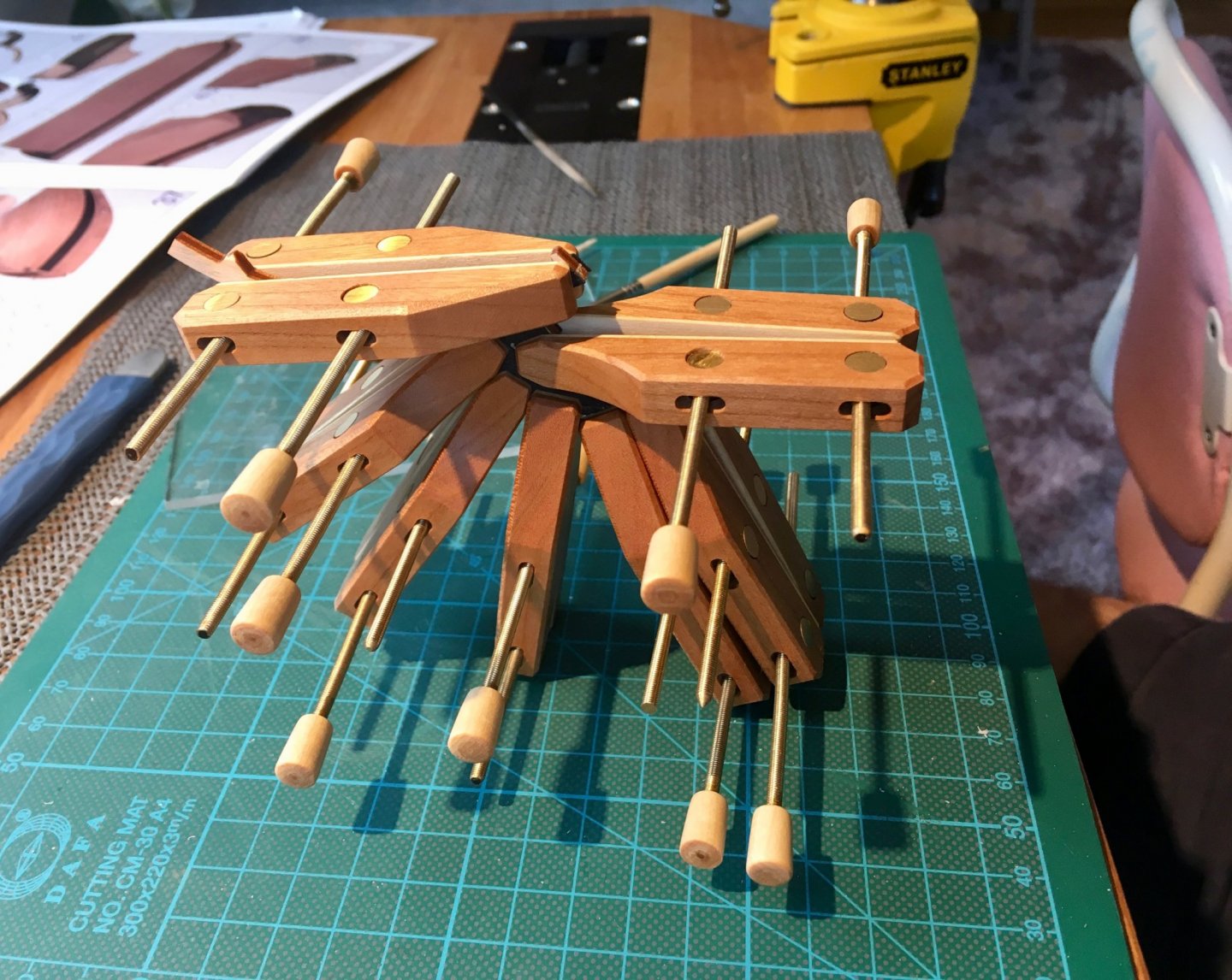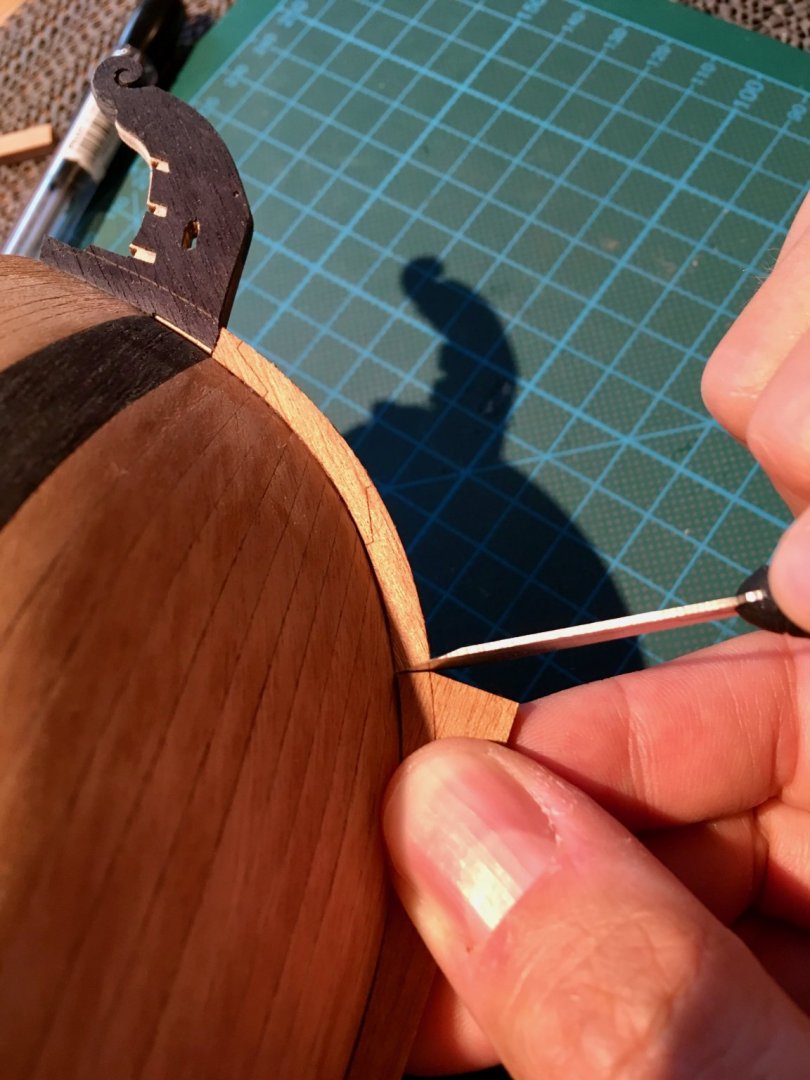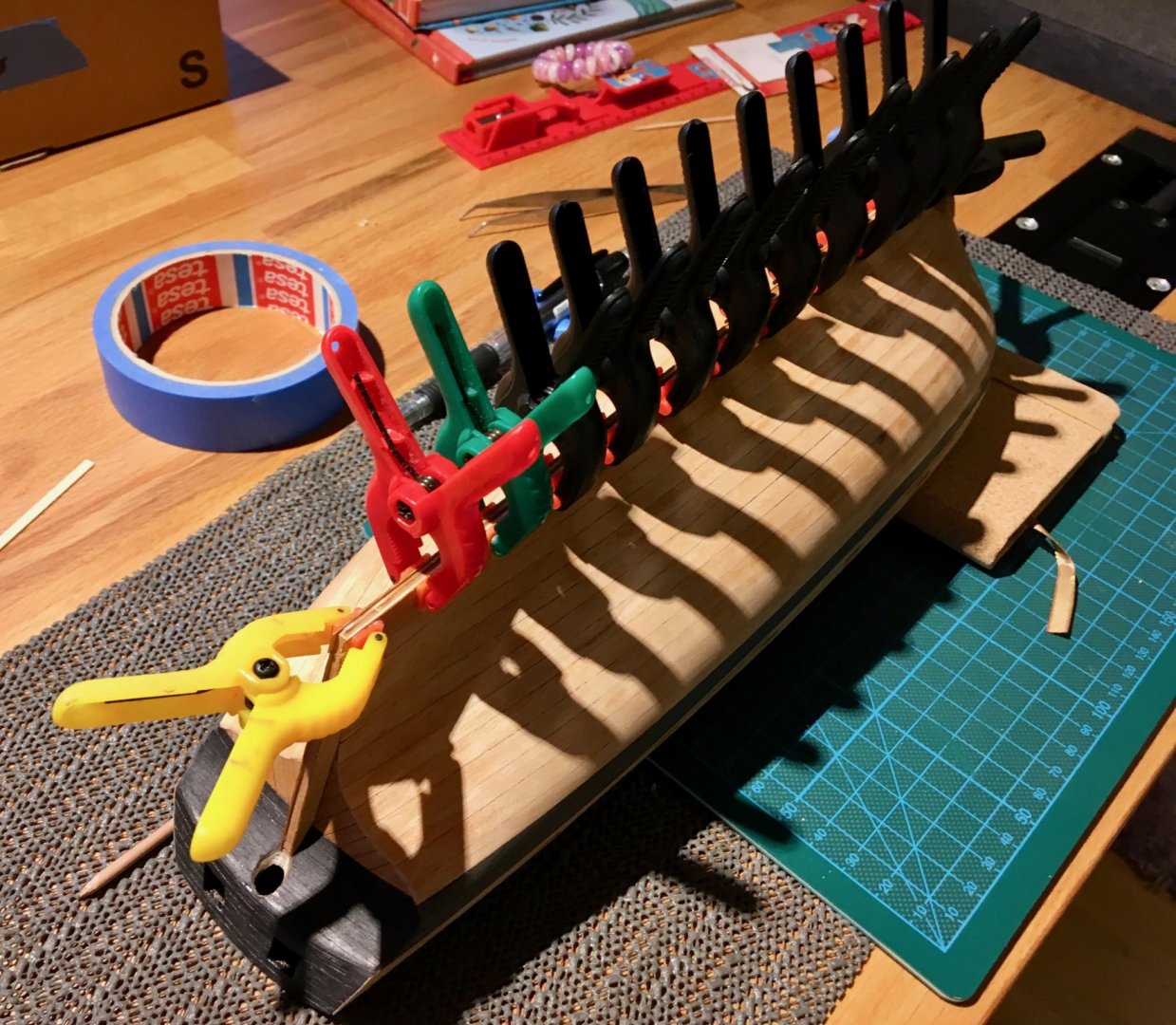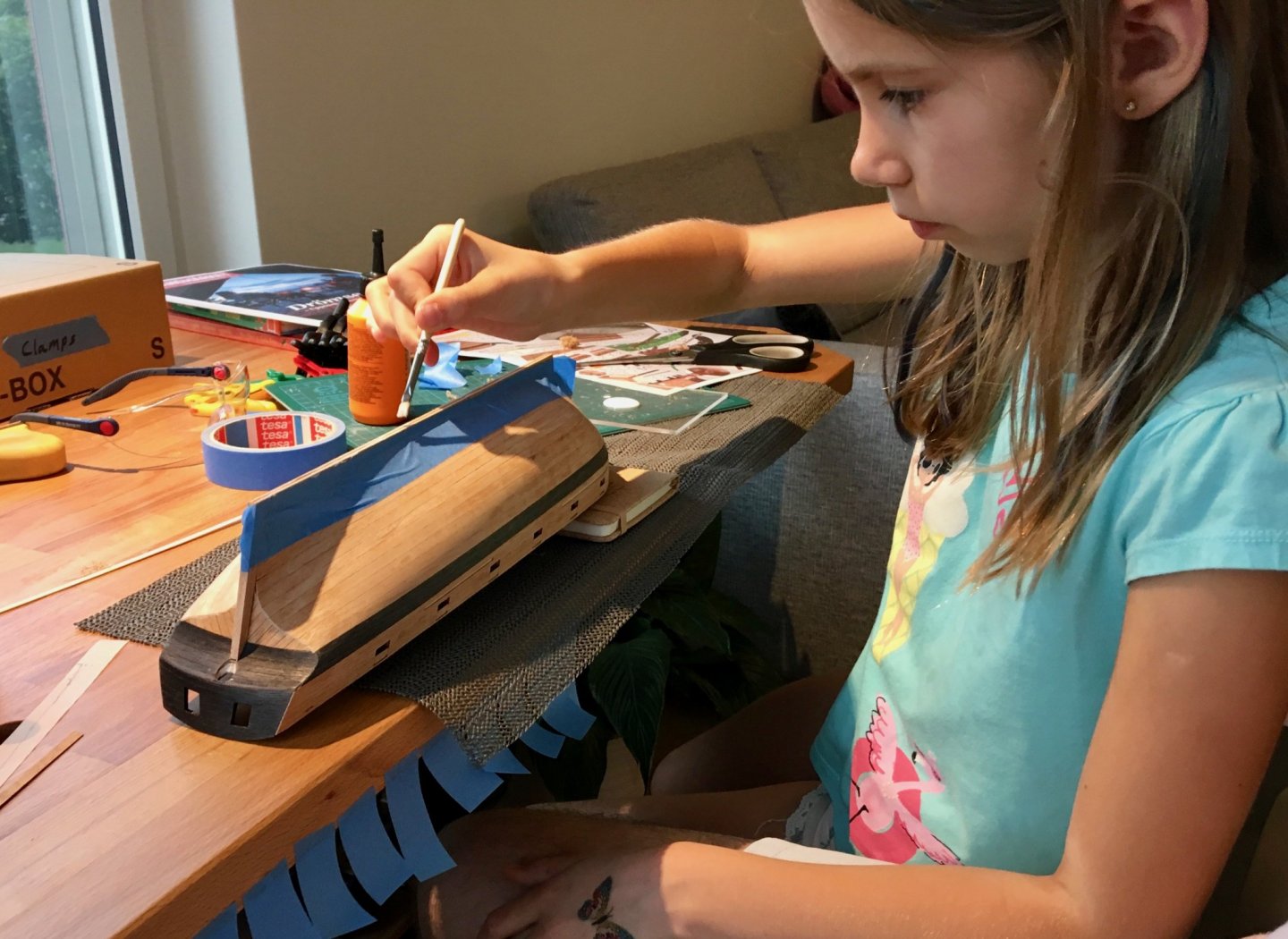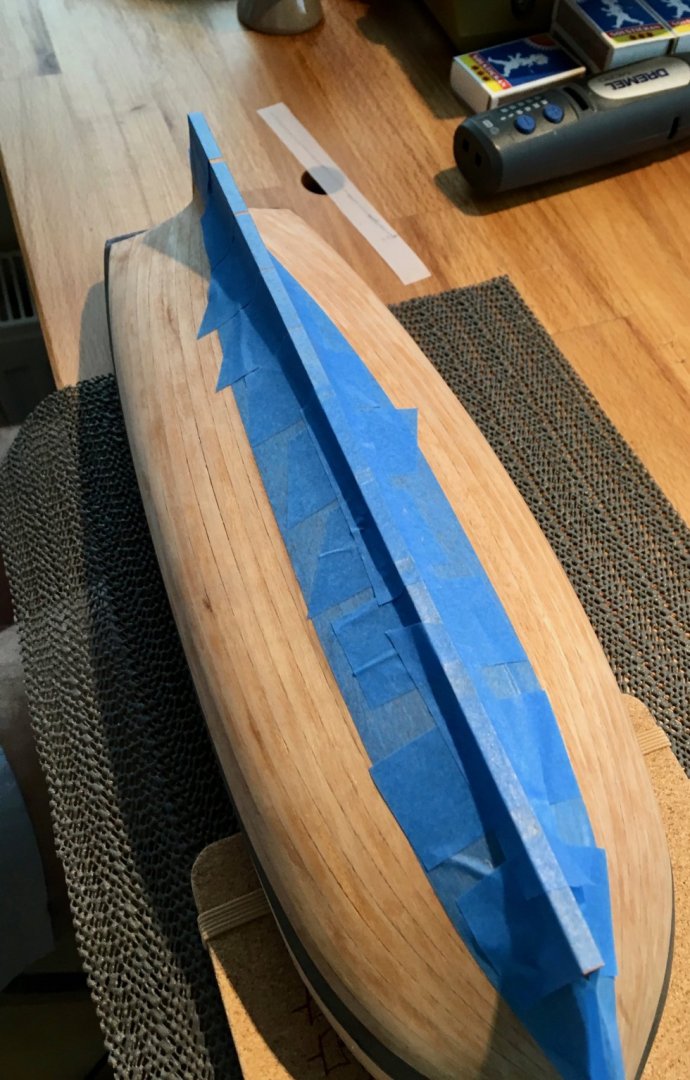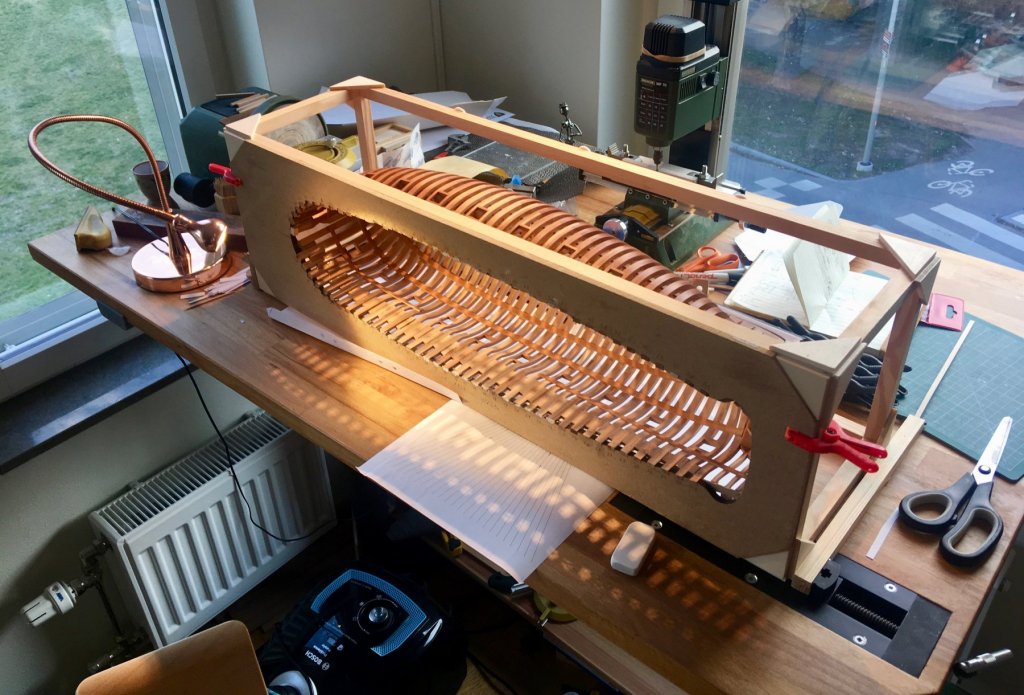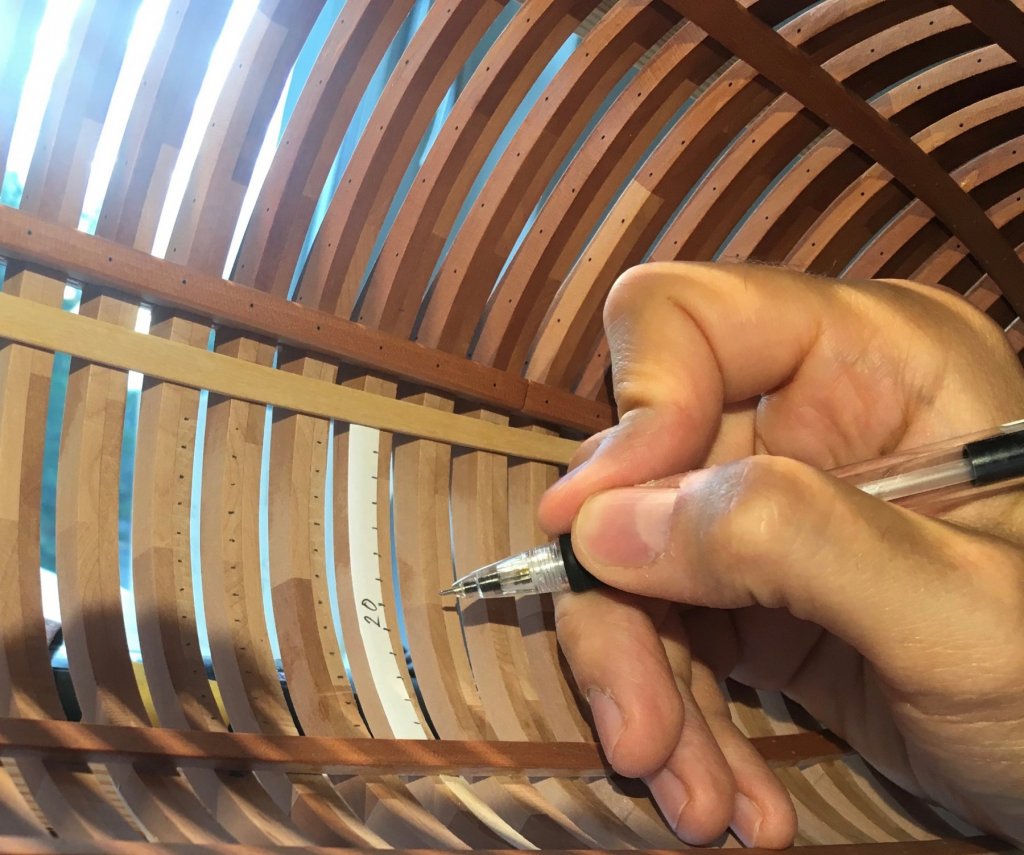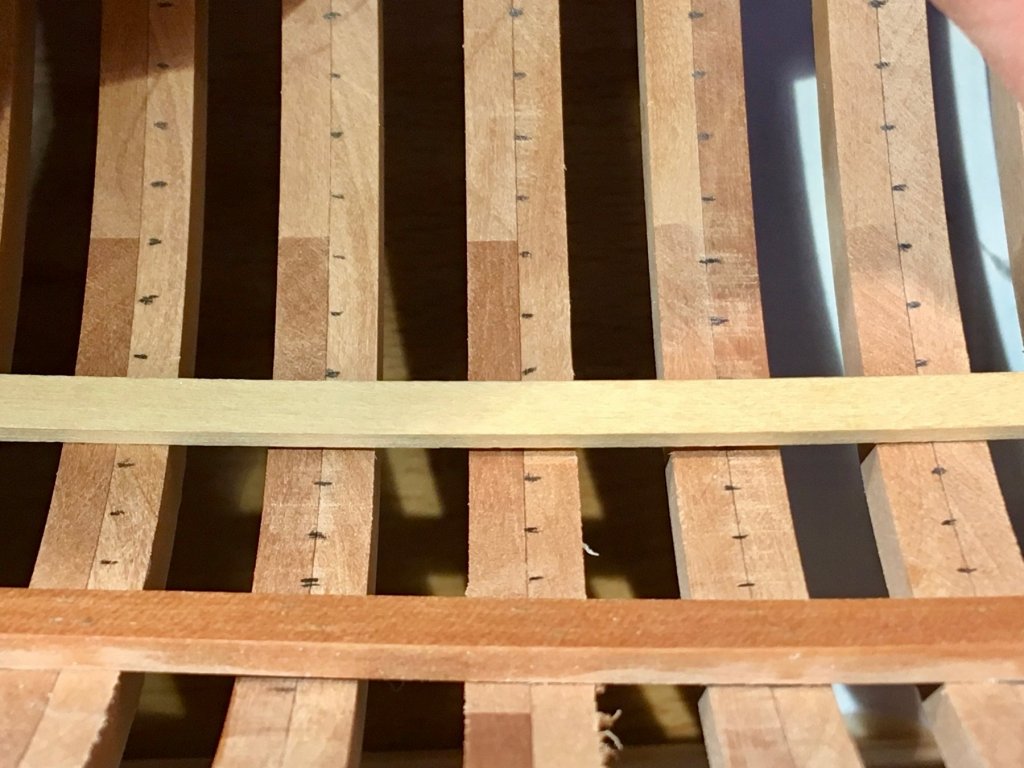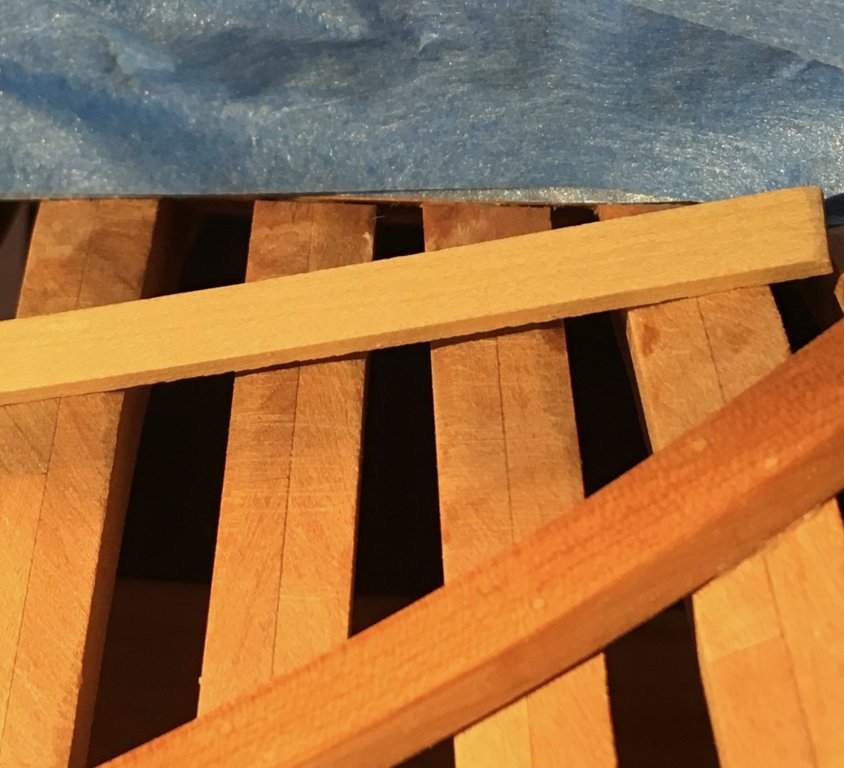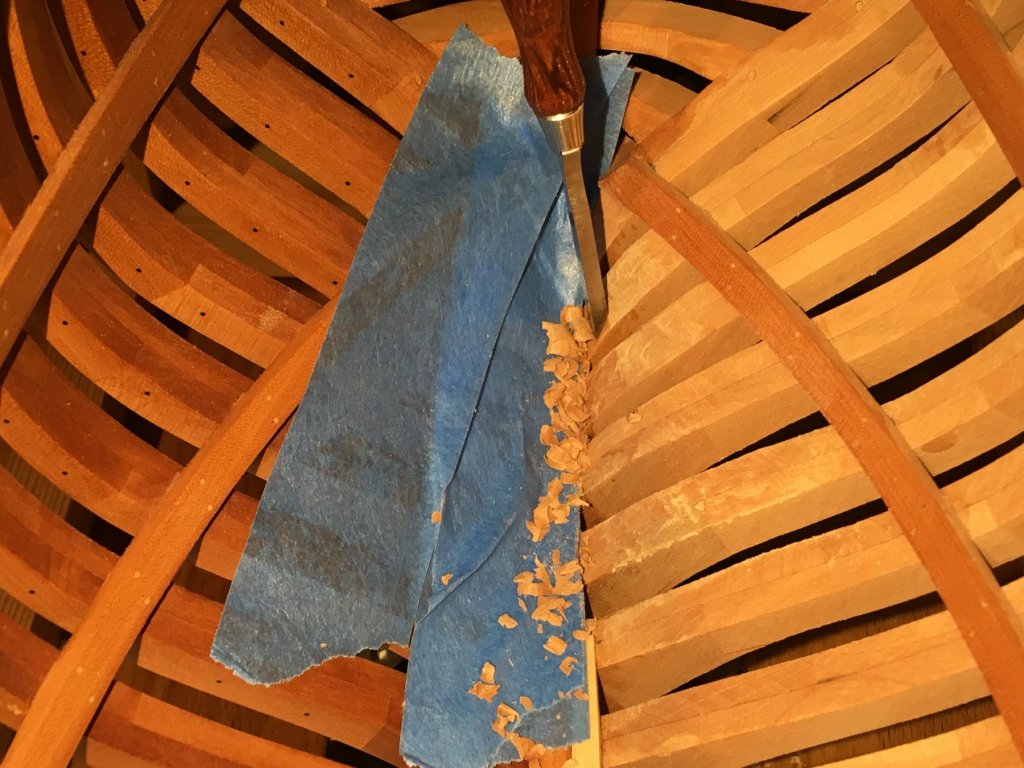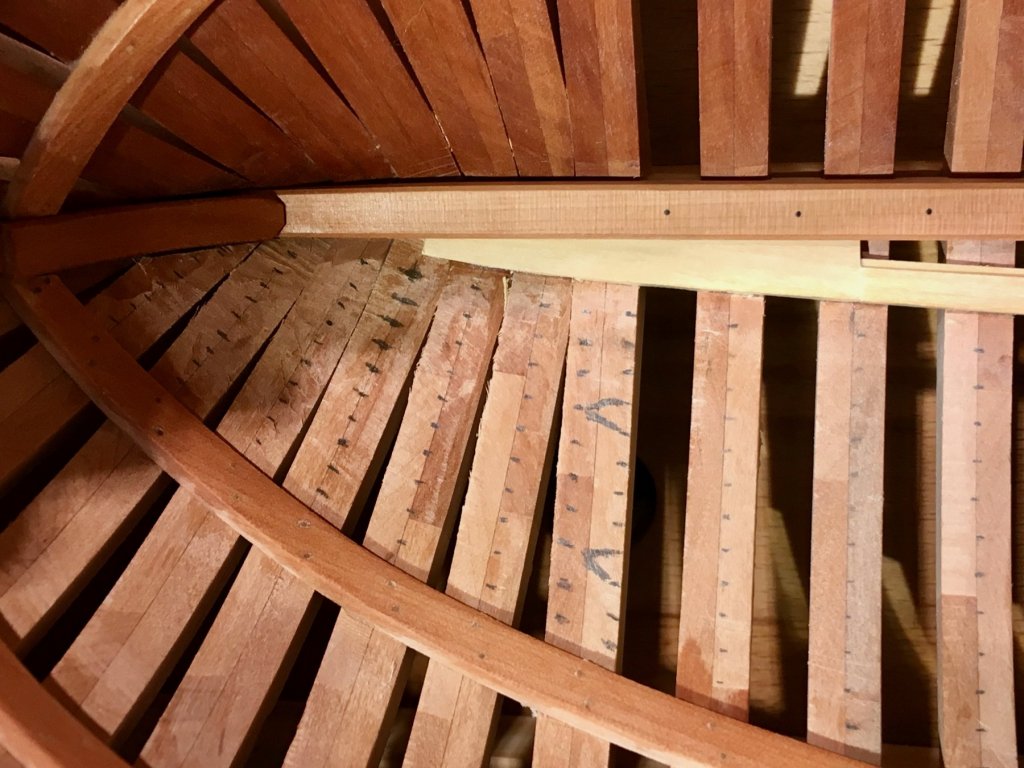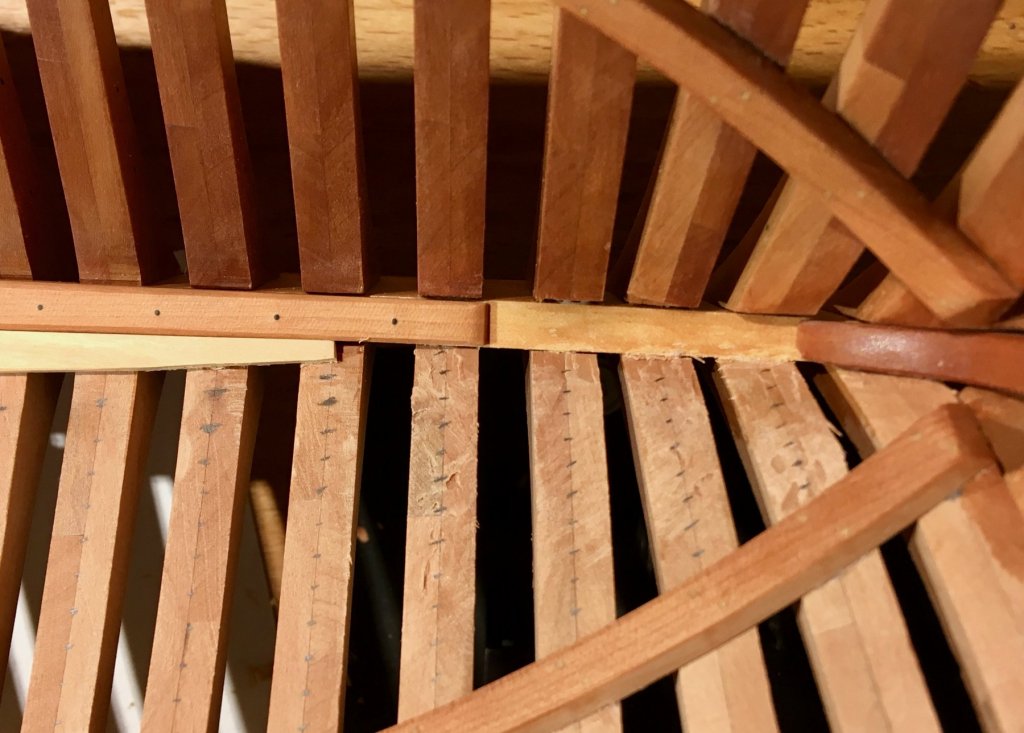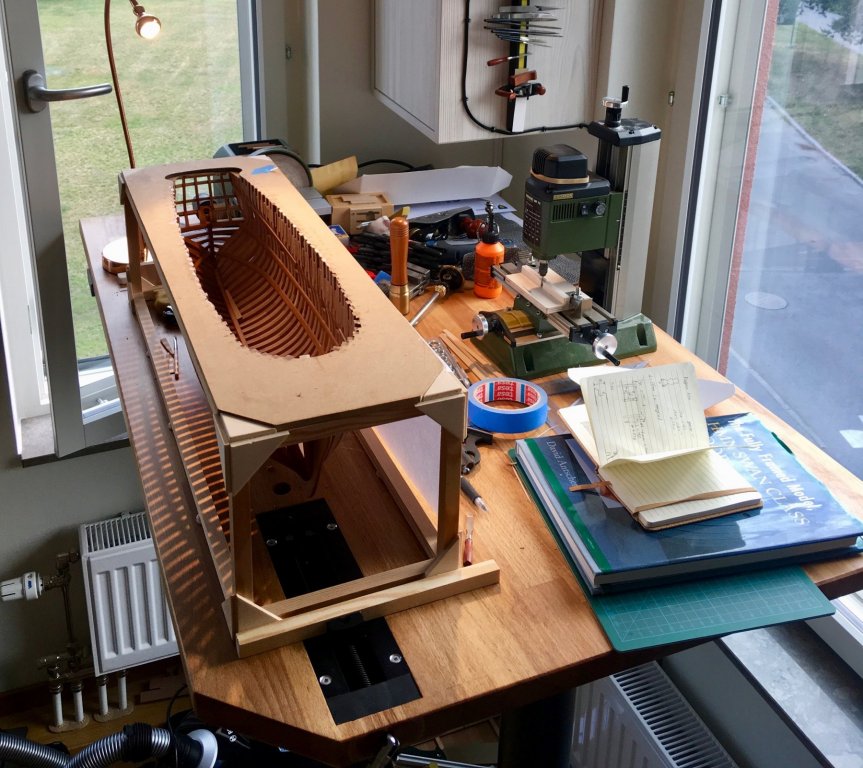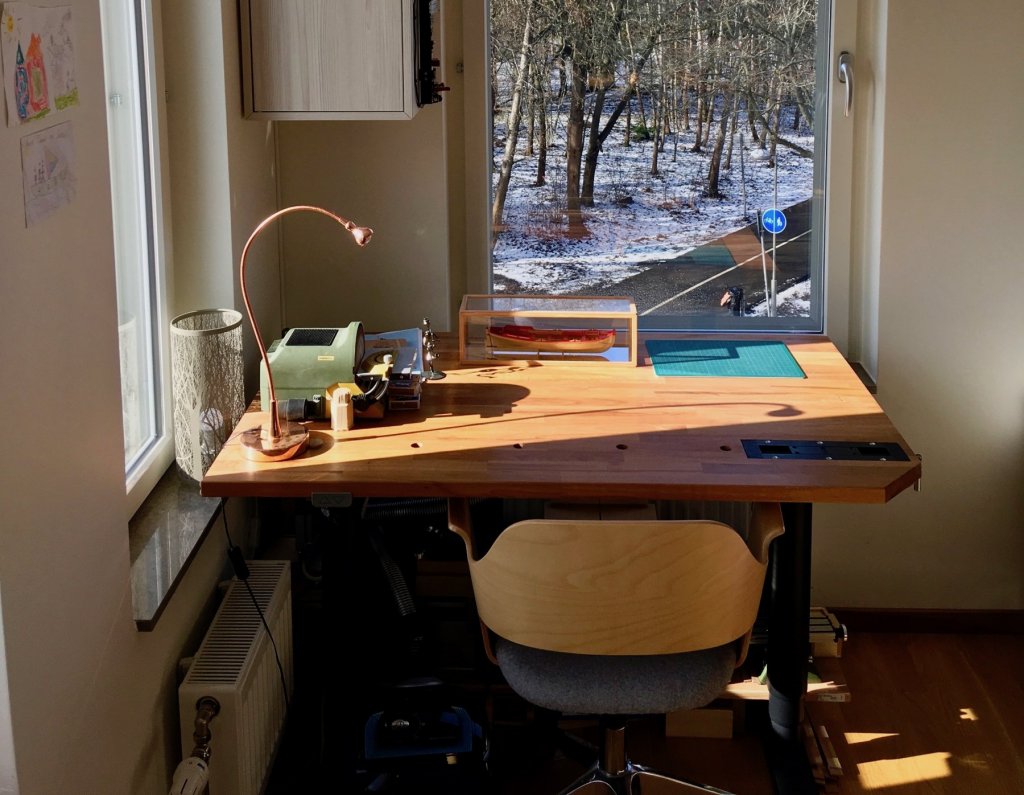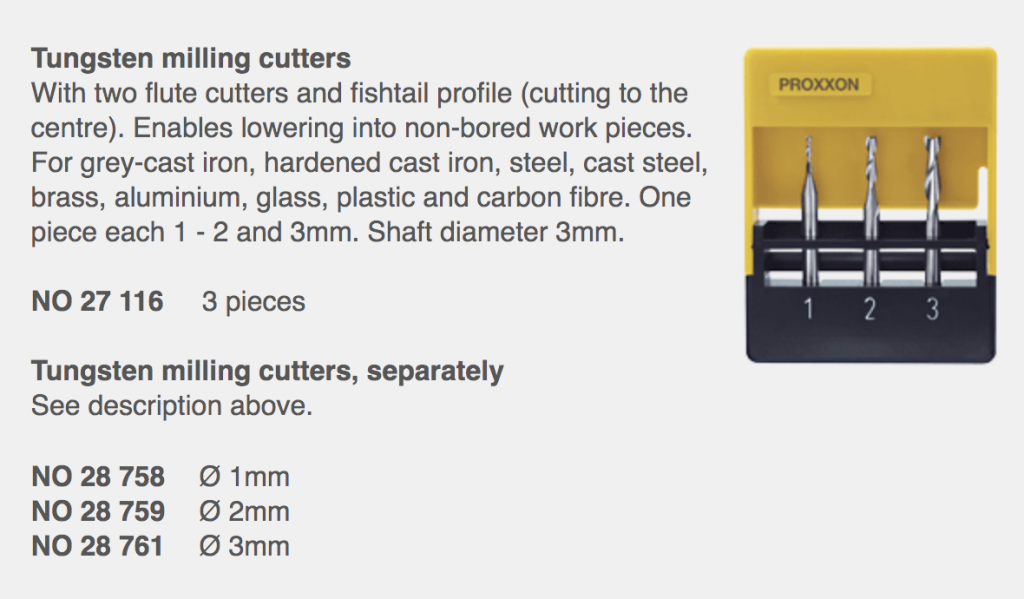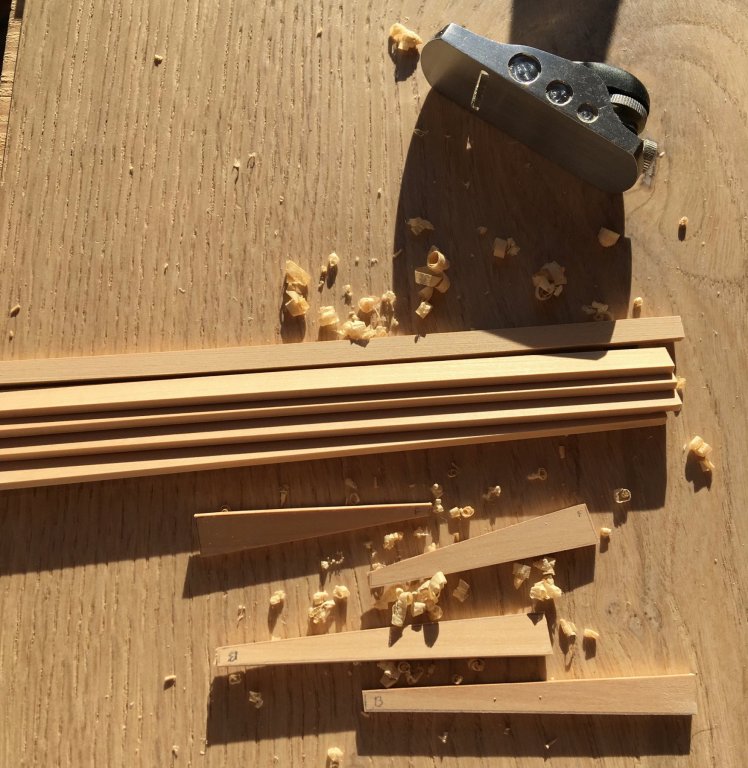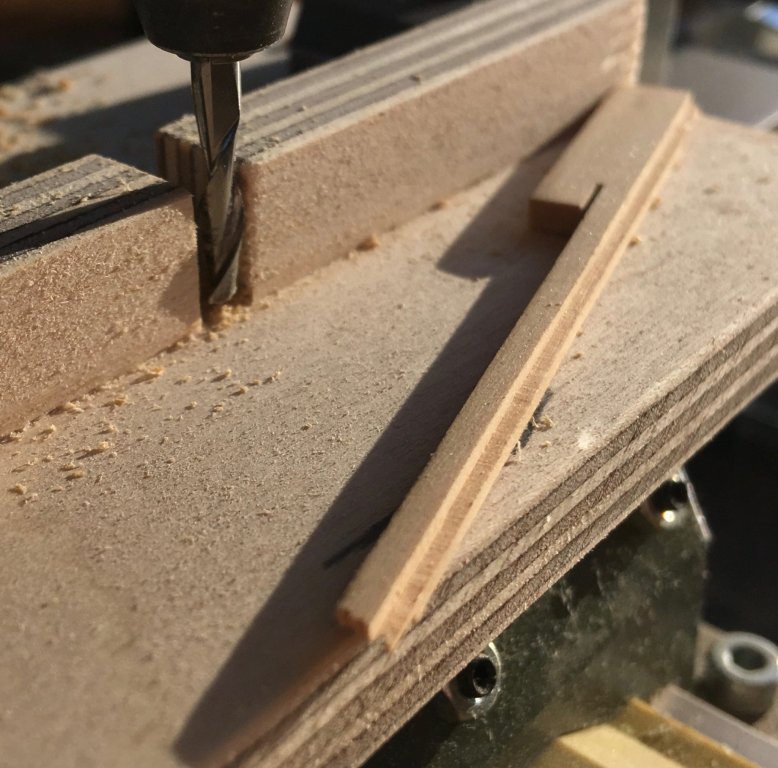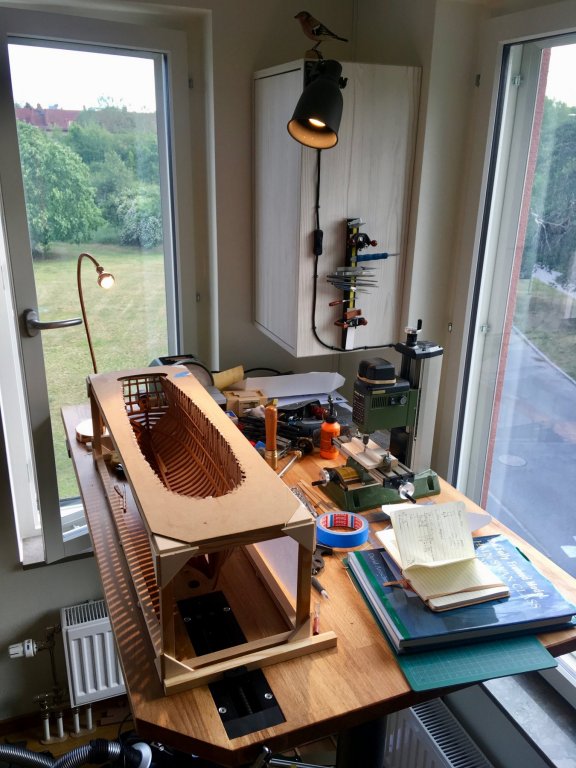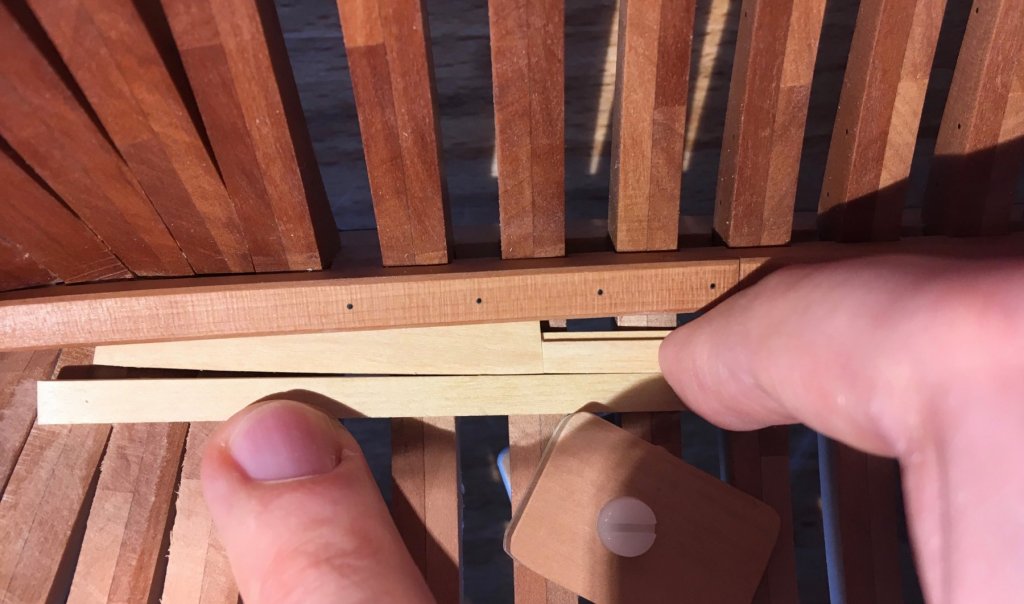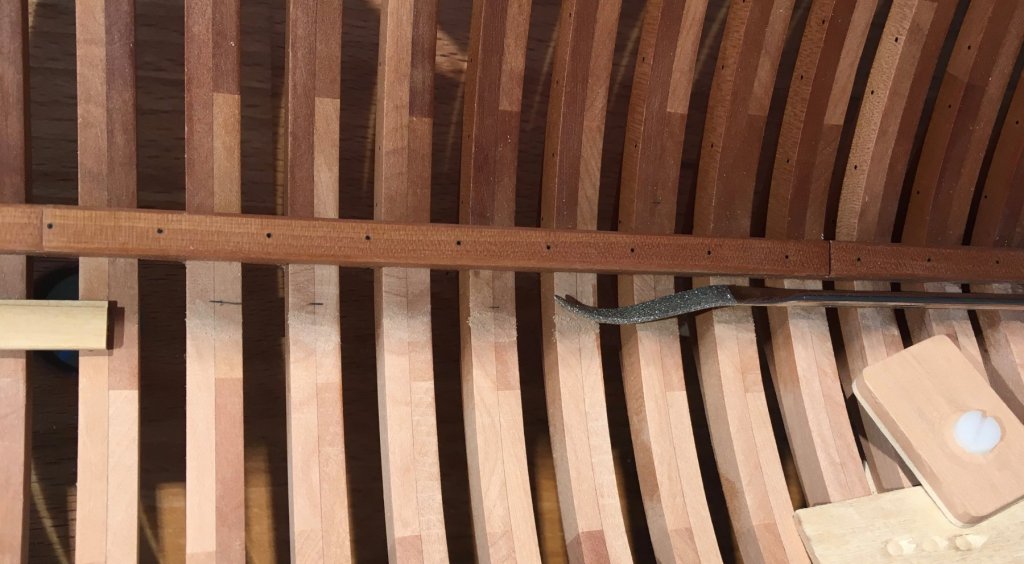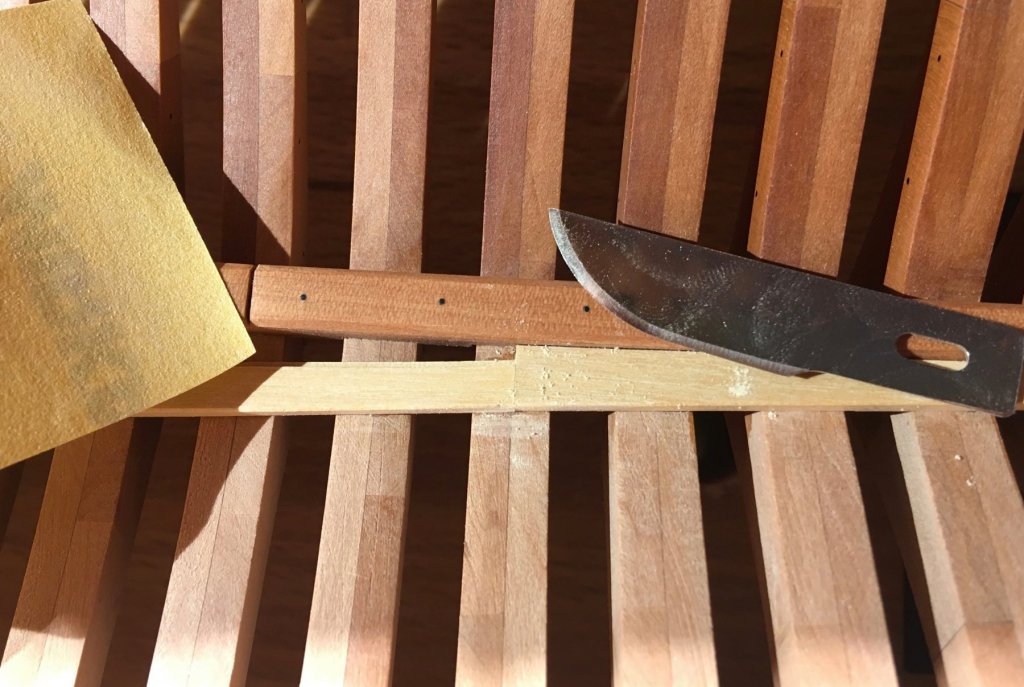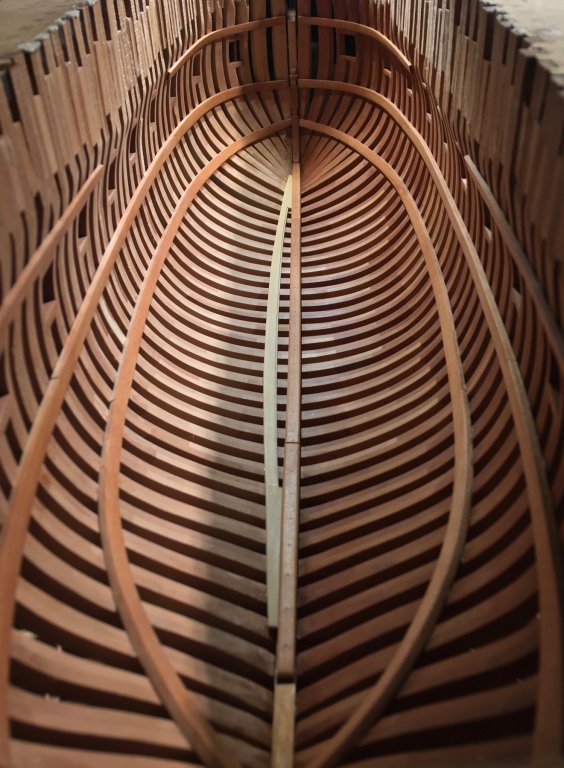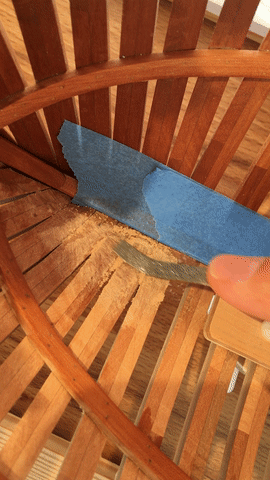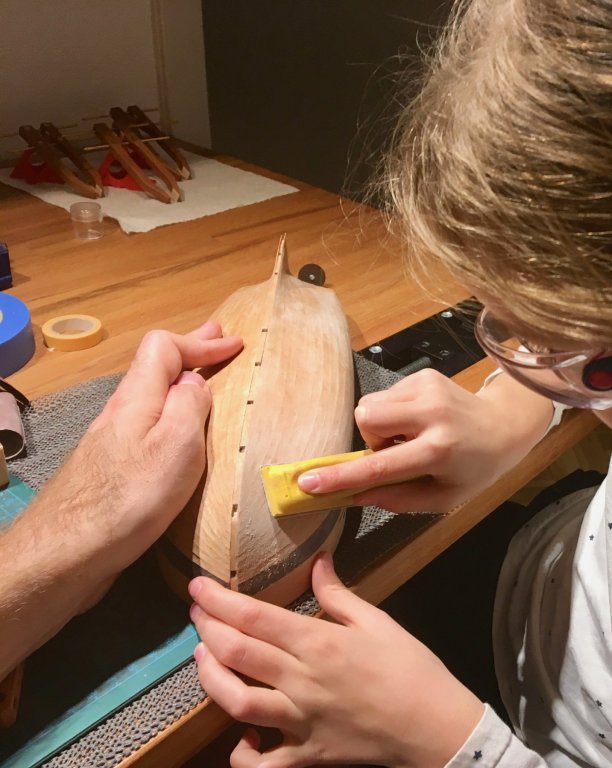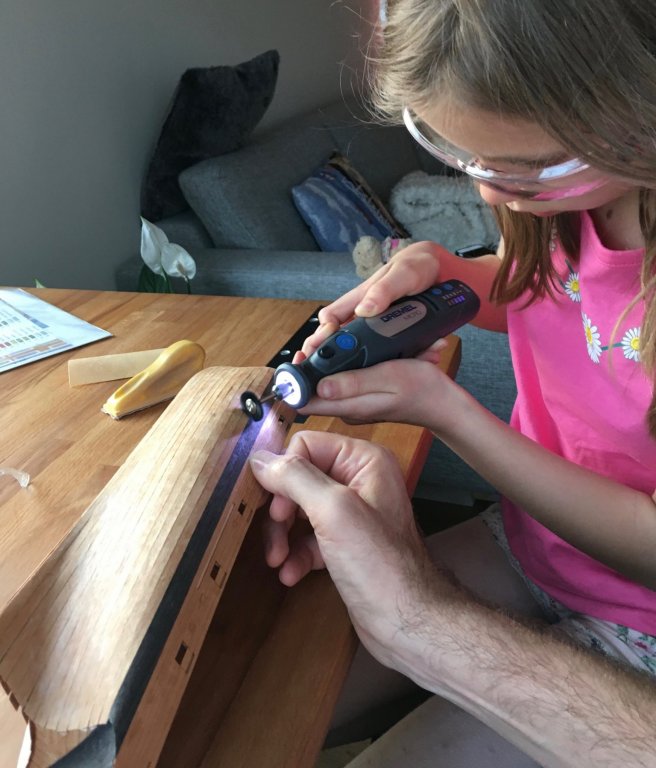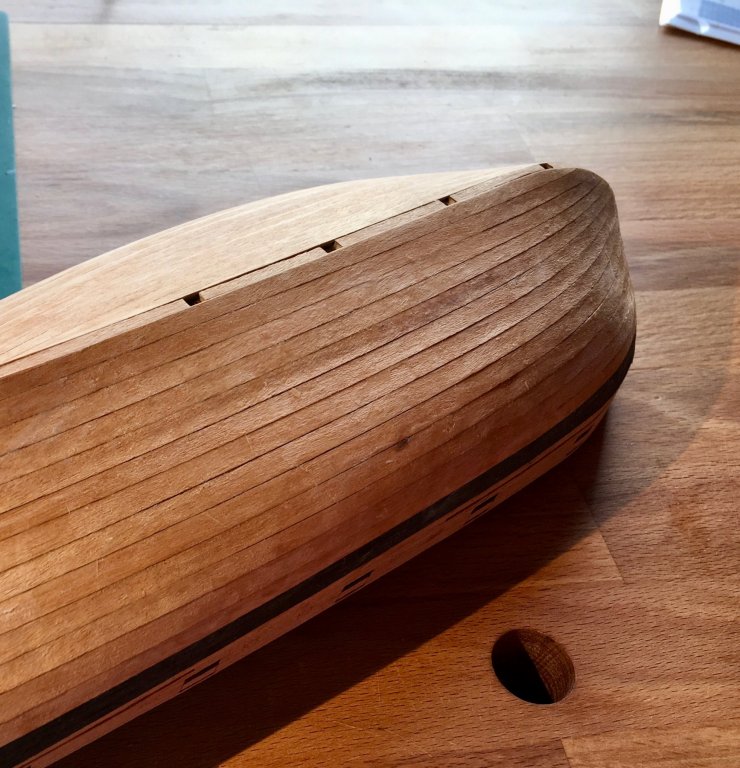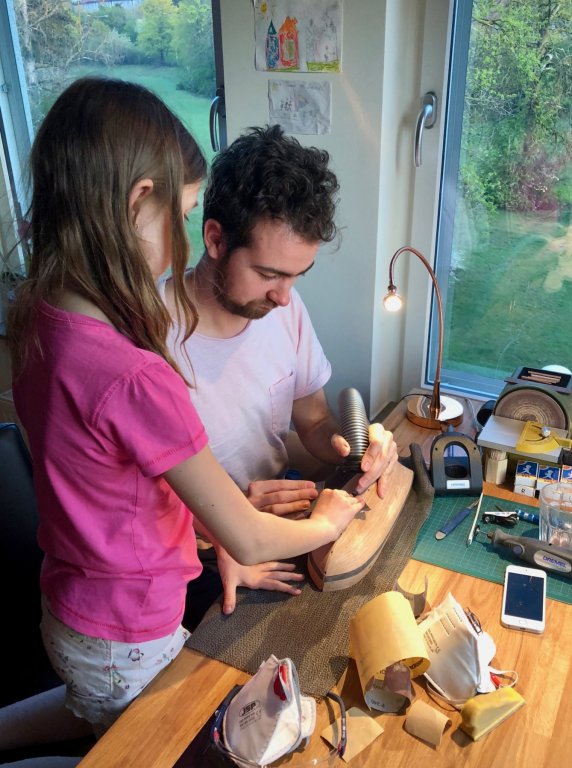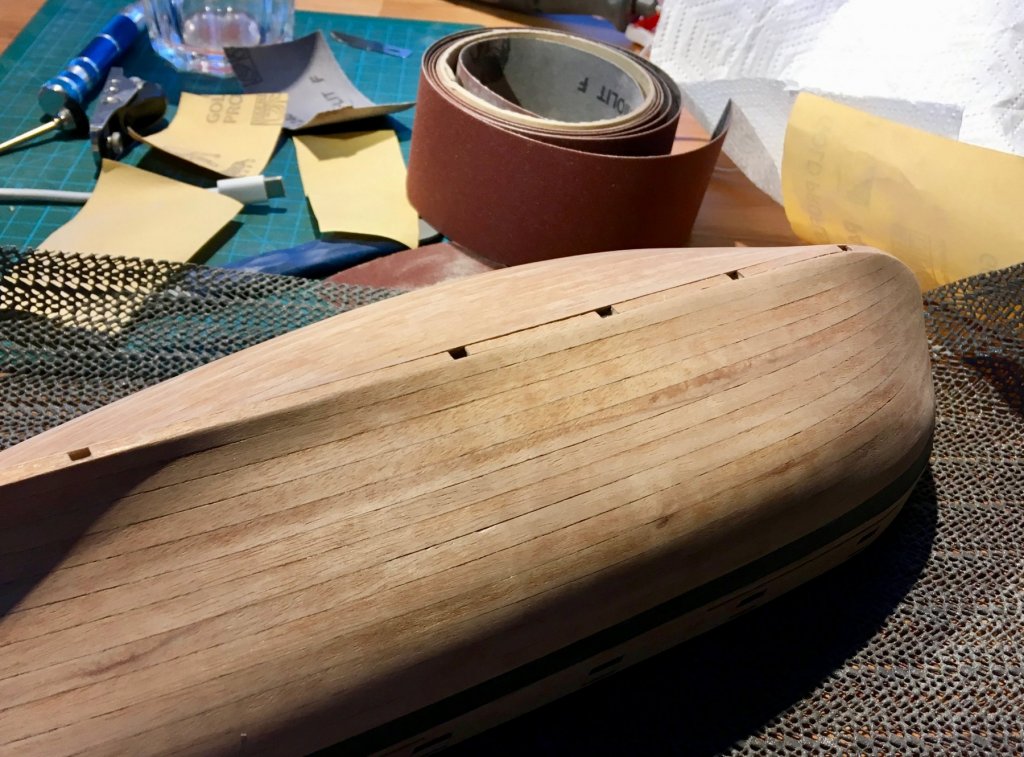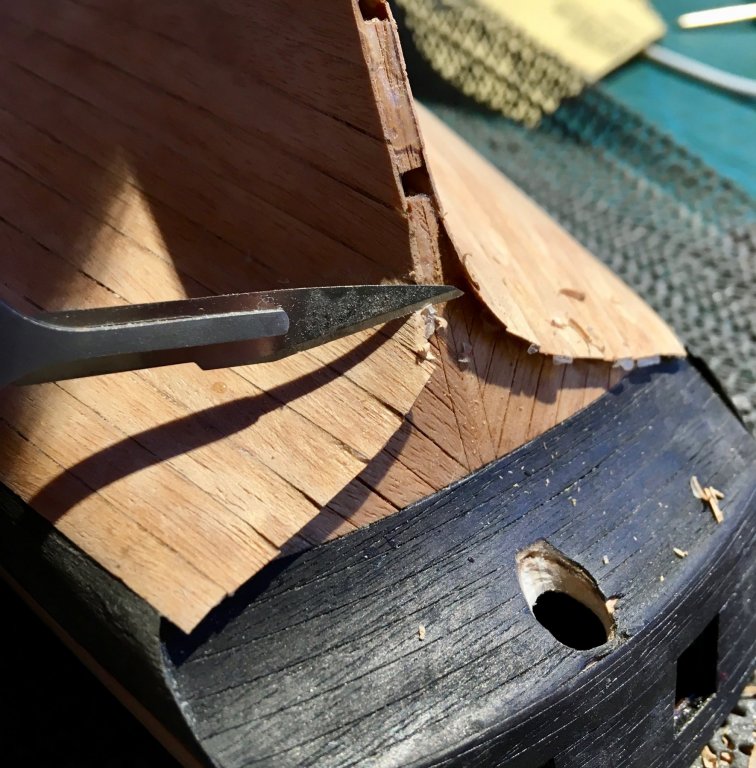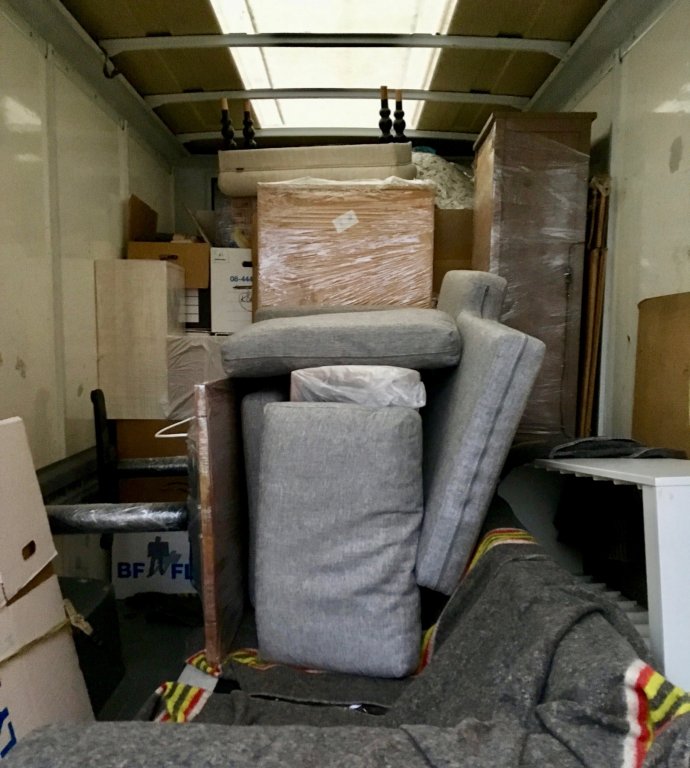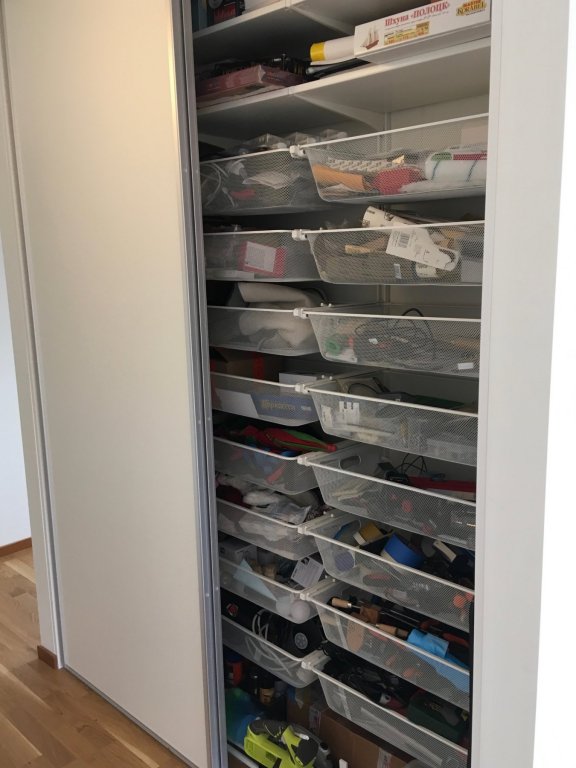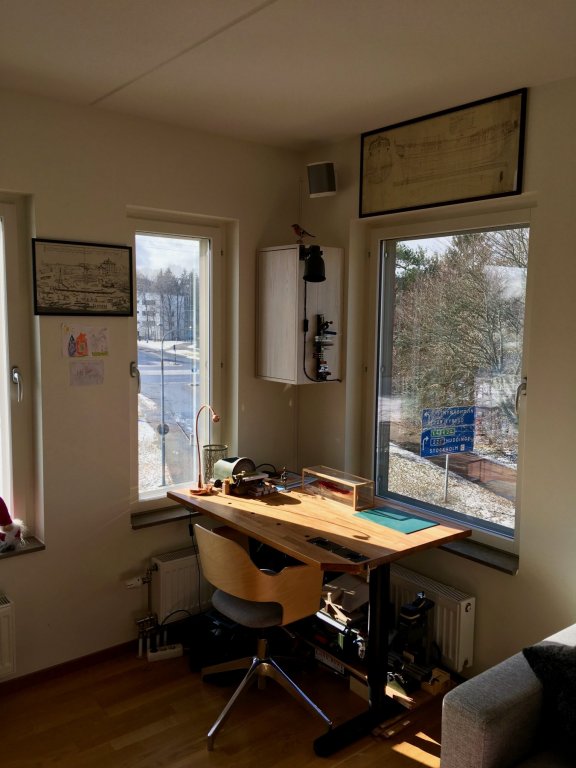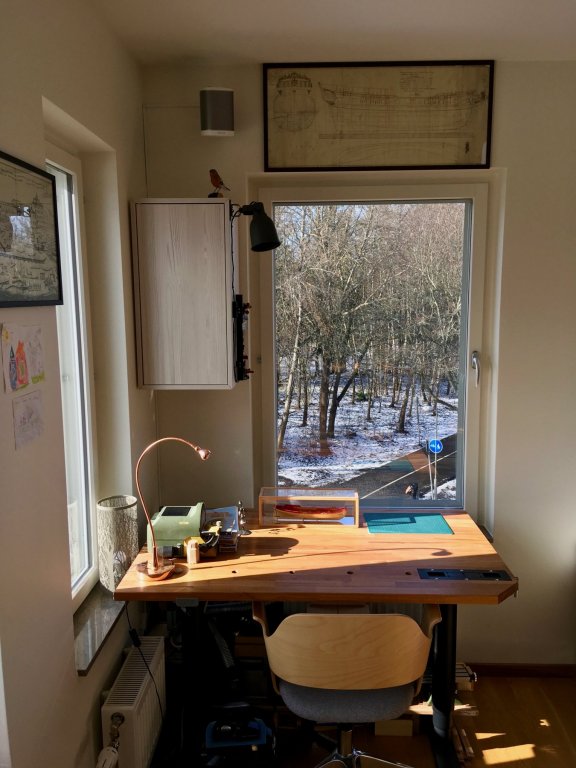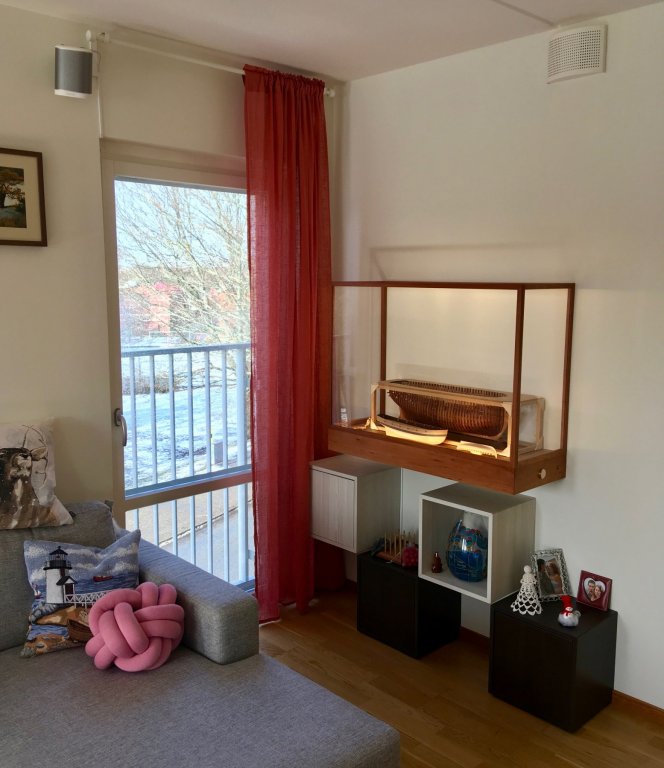-
Posts
1,552 -
Joined
-
Last visited
Content Type
Profiles
Forums
Gallery
Events
Everything posted by Mike Y
-
Thanks a lot for the comments! They are inspiring Had a bit of a block before continuing the inner planking. Started improving my build jig by adding some magnets to it. Very simple and very convenient, now I can attach tiny plane/chisel/scraper right to it, and nothing will fall off. Just stick magnets to your work surfaces, they are cool! Decided to try dry heat bending (thanks, Chuck!), ordered a tiny iron and a soldering iron with some special tips (really nice way to bend a circle!). It takes some practice... Who knew that you can overheat the wood by heating it for too long? Had a number of planks cracked because of that: A lot of mistakes were made:I need some margin, because it was not easy to control the location of a bend. Will practice more. Unfortunately you can't practice on scraps, results really vary depending on a wood type, width and thickness. I had two identical boxwood planks, one 5mm, another closer to 4.2mm width - the narrower one bends so much easier! But I like the method, no clamping and no need to wait for the next morning. Hopefully I will master that skill and will be able to prepare a bunch of planks during one modelling session. Finally I realised that I do not need an extreme side bend, just a little bit goes a long way. The first bent and shaped plank is in place, made out of a straight strip. So nice to find a method that works! Now I can continue with the rest of the planks. The glue-up was a bit awkward though, since there was no way to clamp the front tip. Luckily it mostly stayed in place because of the pre-bending, so keeping it with a finger worked just fine.
- 968 replies
-
- hahn
- oliver cromwell
-
(and 1 more)
Tagged with:
-
No words... I hope your spark will come back to you soon enough, and something else (Belle Poule?) will bring a joy back! Too young and green to really feel your situation, but desperately trying to add a tiny bit to that massive community support. Hope to see you onboard again, soon!
-
Daria is back after the summer, yay! The modelling sessions were rare, but enjoyable nevertheless. We learned how to taper flat surfaces: Fine fitting is easier now, she can do it alone: My clamps were quite handy when laminating the stem, it is tapered so you can't just clamp it between two pieces of glass, and veneer bends with moisture. First time using marking knife for precise trimming of veneer pieces so they fit each other: And her favourite photo: Also learned how to use a chisel in gentle pairing motions. Keeping a consistent angle is hard! And a few last pieces were done completely without me, she did everything from masking to fitting and gluing: But clamping a long piece with a masking tape is more fun if you do it together Hope we'll finish the stem soon!
-
Before installing any more planks, started drawing the reference lines using tick strips. I should have done that before installing the limber strake, but I really wanted to cut some wood to resume modelling.. I am still happy with my flexible jig, that allows working with model in any direction. Very handy for such jobs, allows resting the hand instead of using it suspended. Now it's time to face some sloppiness that I made when fairing the hull. The exposed side got a lot of love, while the other side had a lot of areas that are not properly faired. "Not a big deal, I will plank this anyway", said stupid me a few years ago... Some areas are easy to fix (just adding a thin strip to bridge the gap): But some are bad, and are located in tricky areas. So I spent a few hours with tiny chisels and riffler files to level cant frames. Luckily no need for a nice finish, since planks will hide all the dents. But it is a very delicate task to avoid scratching everything around. Some masking tape and care is necessary. Note to self, and hopefully somebody will avoid the same mistake: spend extra time fairing everything, especially tight areas. Use a strip of wood to check the smooth run, your eye will deceive you. Any hour saved on fairing phase means you borrow that time and will spend 5x fairing it in situ. Damaging something while doing it. So now everything is lined up, but the close-ups around the stern are brutal Most of it will get hidden though. I assumed equal plank width when lining up, but of course they will have different thickness. It is good to have guide marks anyway! So now it's time to start planking, and hopefully avoid too many redos. Really worried about sloppy fairing biting me down the road, will see. Will try to counter it with creative sanding. In worst case scenario - will use a full set of carlings & ledges when making the deck, so nobody will see the mistakes
- 968 replies
-
- hahn
- oliver cromwell
-
(and 1 more)
Tagged with:
-
variable height desks
Mike Y replied to bigcreekdad's topic in Modeling tools and Workshop Equipment
As a user of an adjustable table with the motor, I adjust it all the time... Different operations require different distance, and instead of bending to the table - I can just adjust the table a bit. Also working while standing is more convenient sometimes. I have the IKEA electric table, model name BEKANT. Works great, with very little wobble (heavy table top helps as well). The least wobbly of all the desks I tried. Note that they sell it with or without table top, so you can buy the base itself, and mount some thicker table top, more suitable for modelling other than office work. IKEA have some hardwood tops that are pretty cheap as well. But I would not dare using a hammer / mullet on that table, since that might damage the mechanisms inside the telescopic legs. The hand-cranked desk they have (model name SKARSTA) is built much cheaper and lighter, it is less stable and have a considerable wobble. I see that they have released a new line - IDÅSEN. A bit more expensive, only one size, different construction. Haven't tried it yet, just spotted on the website. I have it for probably 5 years. Once some electrics broke, it simply stopped working. IKEA mailed me a few replacement parts and then delivered a new table, no questions asked.. Not sure if they have the same level of service in US though. After that replacement, it worked with no issues. I guess some early versions had their faults (I bought it the same year it was released), but hope they fixed them now. Here is the final setup I ended up with. The combination of an inset vise + pegs allows me to quickly fix the model and work on it without holding. Note that the table is lifted to some sort of mid position here. Making fine continuous adjustments is very neat, I would not recommend to have a table that you can only adjust rarely to some fixed positions. -
Here is the video from the wreck, it is really surprisingly intact:
-
I am pretty much a milling newbie, but I had a very good experience with Proxxon cutters that they recommend for their MF70 mill. Used them primarily for hardwoods, sometimes plastics or brass, from small precision joints to cutting long grooves. They leave a nice finish, both on the side and in the bottom, really cutting the wood instead of scratching it like some other types of cutters. All other cutters that I have are waaay worse (dremel, etc). Of course, I guess some industrial grade cutters would be better, but at a price around 20 dollars for a set of 3 the proxxon ones are a good start. Now I only use these (except when I need some special shapes), they are still sharp as new, and I haven't broke a single bit so far. Very noob friendly!
-
Small correction: Arkowood changed the website to https://www.arkowood-lossburg.de/ To moderators: could you please edit the first post to adjust the URL? Thanks!
-
Thanks everybody! We are fully settled in the apartment and had a series of housewarming parties, kid birthdays, vacations and other offtopic activities. I finally got some time to resume modelling. The longer the pause is, the harder it is to resume. Especially since I am facing is an internal planking, which is a tricky thing if you want it to be neat. And not all mistakes could be hidden by sanding, since a lot of planks have different thickness. D-oh! Clamping jig to the table is very convenient, I am glad I added a vice to make it possible, can recommend! First boxwood pieces on the model! Future limber streaks. Planing during a sunset is very relaxing. Made a mill fixture to route a rabbet into that boards. It works, but the cut is not very smooth. Overall, this boxwood tends to chip a bit when you mill it freehand of when you scrape it. That is unusual after pear that scrapes smooth. So I need to rely more on files and planes, using scraping for finishing touches, not for shaping I haven't faired the internal part of the hull in delicate areas, so now I am repaying that debt by fairing it now, trying not to scratch the keelson. And hey, it's 21st century, moving pictures are a thing! Frames are scratched with a diamond file to improve glue adhesion and break down the surface patina layer. Final fit is checked with a test plank next to it. Of course, the bottom of the plank is shaped to follow the curvature, and underside edges are broken to simplify the fit with the next plank. After the glue-up, some final blending is done with fine sandpaper and scraping: And the end result is "hoorray, I installed the first plank in a few years" Now it's just a matter of adding the rest of the planks. It's so great to be back!
- 968 replies
-
- hahn
- oliver cromwell
-
(and 1 more)
Tagged with:
-
Mark, thanks for the advice! It is an interesting idea. Though this grain does not bother me so much, because the whole model has an out-of-scale grain, it is part of it style Transom is not an exception. SpyGlass: interesting, it is very well dyed then - the wood is black over its entire thickness (which is like 0.5-0.7mm though), and it is pretty hard. Not sure if dyes can do that with this grain direction. There should be some areas of incomplete penetration then. Also, it behaves similar to ebony when you scrape it - you get small particles instead of chips. All my limited experience with ebony shows the same picture. But I agree, the grain looks unusual. Can be a different type of ebony, or maybe branches vs trunks? Though the veneer sheet used here is 10-15cm wide, hard to find a branch that thick (ebony trees are pretty thin, afaik).
-
I like the "view port" that you left in the transom, great idea!
- 589 replies
-
- le gros ventre
- cargo
-
(and 1 more)
Tagged with:
-
Thanks all for the comments and likes! Yes, we are using respirator masks when sanding (for some reason it was off on that photo, but it is mostly on), plus a vaccuum cleaner is always on to suck the fine dust right away. Working in a living room teaches you the dust hygiene pretty quickly, dealing with a fine sawdust everywhere is not a pleasant thing. And it is good for Daria to think about dust and lungs from early age, she is putting the mask herself now, I do not need to ask. The ebony veneer is reeeeally thin, so we are thinking twice before doing any sanding of scraping on it. It is too thin to sand away that grain, so will leave it like this.
-
The apartment move is over, so we are finally back to modelling! Hull sanding took a while, and it was a big lesson about patience and persistence. To make sure that planks would not start peeling off - we used plenty of glue. Maybe too much, it took forever to get it out using a nylon dremel brush (did not want to apply any moisture to that fiddly planks, they are very sensible to it): Before sanding: After: There are some gaps visible, probably due to wood shrinkage. But we liked the process, good teamwork And she loves making something smooth, even though it is hard to keep going without breaks. I trimmed the plank ends, it was too risky to let Daria do it - they can chip out, it is easy to scratch the transom with a scalpel, etc. A mistake in this area would be hard to fix. But the result is ok. I am not sure what I think about this ebony, not very familiar with the way it sands and scrapes, kind of course and shiny at the same time.
-
Eiffel Tower by Mark Pearse - father/daughter build - WOOD
Mike Y replied to Mark Pearse's topic in Completed non-ship models
Very nice! Any progress photos? -
I use the same method as Amalio, same nylon brushes (discovered it by accident), and it works great! Especially on half-dried glue. It is just much faster and simpler than water. But water works better in tight areas, for sure. Especially water plus scraping with some xacto blade.
-
ancre Le Gros Ventre by ChrisLBren - 1/36
Mike Y replied to ChrisLBren's topic in - Build logs for subjects built 1751 - 1800
No more confusion caused by many models built in parallel. Let's hope this one will turn out great! The start is pretty good anyways. Is that still your french pear? Looks very neat! -
Model Ship Building Stands And Vices
Mike Y replied to LEGION 12's topic in Modeling tools and Workshop Equipment
How come none of you broke off the keel accidentally when clamping a model like this? Should be very careful, can't sand or apply any force to the model when it is clamped this way - what is the real use for them? Proper clamp/jig should really hold the front end the back part of a hull as well... -
Thanks everybody for the feedback about clamps! The log was a bit silent for a while, but for a good reason. Me and Admiral finally found a good apartment worth the upgrade (larger, pretty new, pretty good neighbourhood, good school right across the street, etc), so we were busy selling the previous one, settling in a new one, etc. We moved in around Christmas, but the todo list was pretty long. So plenty of home-remodeling instead of shipbuilding Now 90% of all the renovation stuff is done, and we managed not to go crazy while doing it. Moving the display case was tricky, it is not really designed for the ease of mounting. Here it is, protected by some sofa cushions: But it survived the move pretty well, and found its new place next to a "french balcony" (don't worry, there is a real balcony on the other side): And I got a nice corner for my modelling area, super prime spot! Admiral got a whole room for her knitting hobby, so she is satisfied with the arrangement. The downside of having a lot of windows is not having enough wall area to mount shelves. Though all frequently used tools fit that single shelf pretty well. To hide the rest, I took some space in the storage area in the hall, which is pretty close by: And some tools are stored in the shelves under the display case. So I hope to finish the renovation todolist in a month or so, and get back to sawdust making!
- 968 replies
-
- hahn
- oliver cromwell
-
(and 1 more)
Tagged with:
About us
Modelshipworld - Advancing Ship Modeling through Research
SSL Secured
Your security is important for us so this Website is SSL-Secured
NRG Mailing Address
Nautical Research Guild
237 South Lincoln Street
Westmont IL, 60559-1917
Model Ship World ® and the MSW logo are Registered Trademarks, and belong to the Nautical Research Guild (United States Patent and Trademark Office: No. 6,929,264 & No. 6,929,274, registered Dec. 20, 2022)
Helpful Links
About the NRG
If you enjoy building ship models that are historically accurate as well as beautiful, then The Nautical Research Guild (NRG) is just right for you.
The Guild is a non-profit educational organization whose mission is to “Advance Ship Modeling Through Research”. We provide support to our members in their efforts to raise the quality of their model ships.
The Nautical Research Guild has published our world-renowned quarterly magazine, The Nautical Research Journal, since 1955. The pages of the Journal are full of articles by accomplished ship modelers who show you how they create those exquisite details on their models, and by maritime historians who show you the correct details to build. The Journal is available in both print and digital editions. Go to the NRG web site (www.thenrg.org) to download a complimentary digital copy of the Journal. The NRG also publishes plan sets, books and compilations of back issues of the Journal and the former Ships in Scale and Model Ship Builder magazines.



